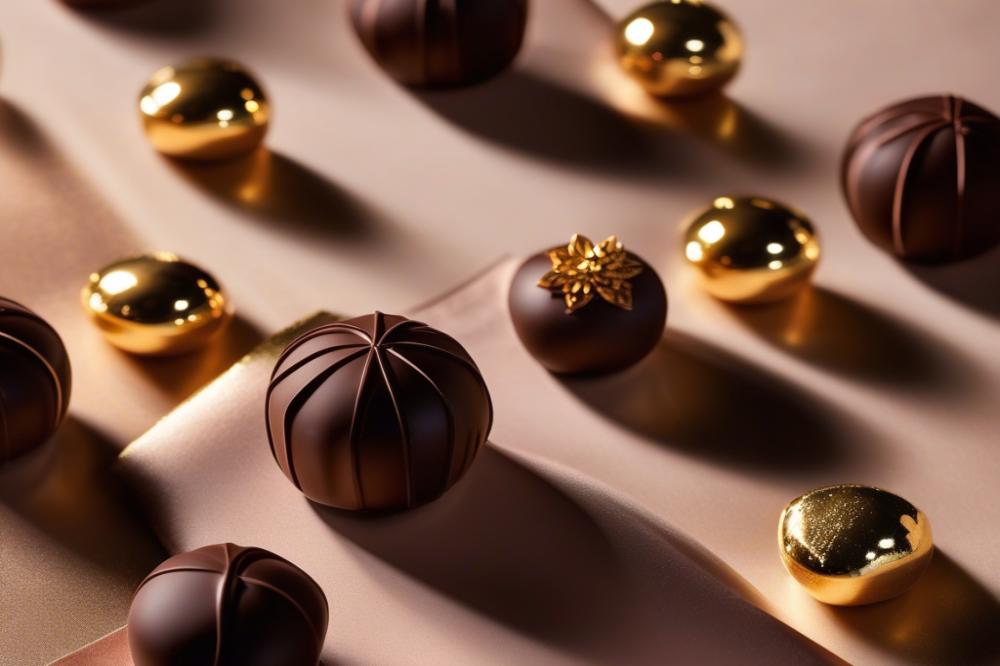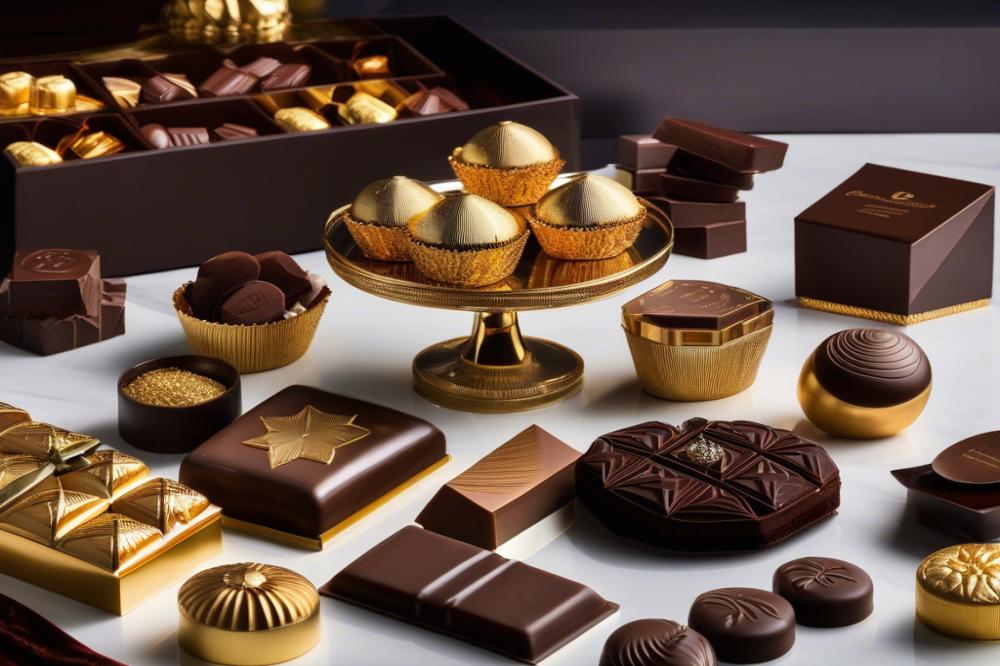Introduction
chocolate has traveled a long way from its beginnings as a simple food enjoyed by ancient civilizations. The origins of cacao date back thousands of years. Cultures in Mesoamerica revered it, using it in rituals and as currency. Over time, the simple treat transformed into synonymous with indulgence and luxury.
A fascination with fine chocolate emerged as methods of processing and preparing cacao evolved. By the time chocolate reached Europe, it became a coveted drink among the aristocracy. Its rich taste and delightful texture appealed to the elite, making it a hallmark of high-end products.
Gourmet chocolate brands began to emerge, further cementing its status in society. Companies recognized the potential of marketing it as a luxury good. A carefully crafted image of sophistication and desirability surrounded confectionery items. The branding around chocolate shifted, emphasizing quality and craftsmanship.
Today, chocolate represents more than just a sweet treat. It symbolizes wealth and refinement. Understanding its history helps appreciate this connection with luxury. The journey from humble origins to sophisticated branding reveals why so many view chocolate as an essential part of indulgent experiences.
The Origins of Chocolate

Long before it became the delectable treat we enjoy today, cacao was cultivated by ancient civilizations like the Maya and Aztec. For them, this precious bean was far more than a snack; it was a vital part of their culture. These societies thrived on cacao, showcasing its importance in their everyday lives.
Cacao was primarily used as a beverage, often consumed during ceremonies. Rich aromas filled the air as individuals celebrated significant events. This drink was not just about taste; it symbolized wealth and status. The high cost of cacao made it accessible only to nobility and priests. Consuming it was a luxury, an indulgence reserved for those at the top of society.
As time passed, the function of cacao began to evolve. What started as a ceremonial item transitioned smoothly into a trade commodity. Civilizations quickly recognized the economic potential of cacao. It became a sought-after export, driving trade routes and commerce.
This shift encouraged creative marketing strategies. Cacao transformed into a high-end product, featured prominently in the lives of the elite. The branding that developed around cacao led to the emergence of fine chocolate, which catered to discerning tastes. As gourmet recipes spread, people started to associate chocolate with celebration and luxury.
From ceremonial uses to confectionery delights, history has shaped the perception of this beloved treat. Its journey illustrates the interplay between culture, wealth, and indulgence. Today’s chocolate brands owe much to these early influences.
The Evolution of Chocolate Consumption

The Introduction of Chocolate to Europe and Its Transformation
The history of cacao began with ancient civilizations in Mesoamerica. The drink made from cacao was a ritual beverage, enjoyed by the elite. When Europeans first encountered chocolate in the 16th century, it was no longer just a drink. By blending it with sugar and spices, they transformed its taste. Soon, chocolate spread across Europe, captivating the senses of the upper classes. It came to symbolize wealth and sophistication, appearing in lavish gatherings and royal courts. The marketing of this exotic drink emphasized its rarity and allure, marking the beginning of its luxury association.
The Emergence of Solid Chocolate in the 19th Century and Its Impact
A significant change occurred in the 19th century with the invention of solid chocolate. Processes like conching made it possible to create a smoother and more enjoyable texture. Consumption shifted from merely a drink to bars and confections. This innovation sparked a revolution in how chocolate was made and sold. Artisan chocolatiers began to craft what we now refer to as fine chocolate. The availability of gourmet varieties ensured that not just anyone could indulge. Solid chocolate quickly became a favorite treat, appealing to a broader audience while retaining its luxurious image.
Development of Chocolate as a Luxury Food Item for Elite Social Classes
As the 19th century progressed, chocolate branding evolved into a marketing powerhouse. Companies started to create high-end products, appealing to the wealthy elite. Special packaging and elegant advertising campaigns highlighted its luxurious nature. Chocolates were often gifted during holidays and special occasions, further cementing its status as a symbol of indulgence. Social events showcased gourmet selections, making them a centerpiece in lavish settings. The association with luxury thrived, and the elite embraced chocolate as a reflection of their refined tastes. Through years of evolution, this confectionery delicacy weaved itself into the fabric of high society, establishing an enduring legacy.
Marketing and Branding Strategies in the Chocolate Industry

Innovative marketing has played a key role in elevating chocolate products. Over the years, brands have cleverly crafted stories that highlight the indulgence associated with fine chocolate. Clever campaigns often focus on the origins of cacao, painting a picture of exotic locations and rich histories. Such storytelling helps consumers connect emotionally, making them more likely to purchase gourmet options.
Branding strategies have created a strong perception of certain confections as high-end products. The rise of premium brands has shifted consumer expectations. Luxurious logos, elegant fonts, and upscale imagery contribute to this feeling of sophistication. Many people now view gourmet chocolate as an essential treat for special occasions. It has transformed from simple sweets to a status symbol.
Packaging design heavily influences consumer perceptions of luxury. Attractive wrappers and beautifully designed boxes catch the eye of potential buyers. Textures, colors, and shapes are carefully chosen to evoke feelings of indulgence. When shoppers see premium packaging, they often associate it with quality and exclusivity. This connection leads to higher sales as people desire to own those high-end products.
By creating an unforgettable unboxing experience, brands encourage customers to feel valued. The combination of sleek designs and visual appeal makes chocolate more than just a snack; it becomes an experience. Historical ties to luxury goods, combined with modern marketing strategies, solidify chocolate’s unique position in the marketplace. Today, consumers are willing to spend more for a gourmet piece that makes them feel special.
The Rise of Fine and Gourmet Chocolate

Fine chocolate is typically defined by its high-quality ingredients and rich flavors. It often features a higher cacao content than standard varieties. Characteristics include careful sourcing, meticulous production methods, and an emphasis on taste. Gourmet products focus on innovation and unique flavors that elevate the experience. These premium choices reflect a commitment to quality and craftsmanship in the confectionery world.
Artisanal chocolate makers have played a significant role in redefining luxury. They create small-batch productions, emphasizing personal touch and creativity. Each piece tells a story of its origins, invoking a sense of history. This dedication to quality has revolutionized chocolate branding. Consumers now see fine chocolate not just as a treat but as a form of indulgence and an expression of art.
In recent years, ethical sourcing has emerged as a vital trend in the industry. Many high-end products now feature sustainably produced cacao. This commitment resonates with customers who care about the environment and fair trade practices. Brands have learned that aligning with consumer values enhances desirability. Marketing strategies increasingly highlight these ethical approaches. Reflecting a growing awareness, luxury chocolate buyers are seeking products that affirm their social responsibility.
Additionally, these trends influence the perception of gourmet chocolate. The connection between satisfaction and sustainability enriches the experience for consumers. Luxury branding now often includes storytelling about the cacao origins and the artisans behind the craft. With a focus on transparency, customers appreciate knowing where their confectionery comes from. This level of engagement deepens emotional connections to the product.
Chocolate in Modern Luxury and Indulgence
The world of luxury has evolved. Fine chocolate brands now position themselves as treasures rather than mere treats. Their marketing strategies focus on rich history and exquisite cacao origins. By highlighting unique flavors and artisanal techniques, brands create an appealing narrative.
High-end products often draw connections to other luxury items like wine and jewelry. Chocolatiers pair their treats with premium wines, enhancing experiences for consumers. This intersection elevates chocolate, making it a choice for special occasions and celebrations. Gourmet offerings often lure those looking for something more than average sweets.
Many brands utilize effective chocolate branding to stand out in a crowded market. Intricate packaging, elegant designs, and storytelling draw customers in. These elements make the product feel like a status symbol. In contemporary society, indulging in a fine chocolate bar is more than satisfying cravings. It represents sophistication and a taste for the finer things in life.
Crafted with care, each piece tells a story. Confectionery items can evoke emotions, linking joy and luxury. The social aspect cannot be ignored either. Sharing exquisite chocolates can signal wealth and taste, making them popular gifts for important people. This association continues to grow, reinforcing chocolate as a coveted item in social settings.
Ultimately, the luxury chocolate market thrives on exclusivity and appeal. As companies innovate and create, consumers can expect a blend of classic flavors and modern twists. The increasing demand for premium items shows no signs of slowing down, as indulgence remains deeply rooted in culture.
Final Thoughts on the Journey of Chocolate
Over the centuries, this delightful treat has transformed significantly. From its ancient origins where it was consumed as a bitter drink in Mesoamerica, it has crossed oceans and changed forms. Today, people enjoy it as not just a sweet treat but as a symbol of luxury. The journey shows us how times change and tastes evolve, proving that some things become more valuable with age.
The luxury market continues to embrace this rich history. Specialty brands craft artisanal varieties, often focusing on single origins and sourcing techniques that highlight quality. This level of dedication captures the imagination and wallets of consumers looking for something special. In upscale shops, chocolates are displayed like fine jewelry, elevating their status to that of a prized possession. Such trends indicate that the connection between chocolate and luxury is unlikely to fade anytime soon.
Indulgence plays a vital role in the cultural significance of this sweet delight. Celebrations often involve gifting fine confections, creating memorable experiences for loved ones. Whether it’s a romantic gesture or a personal treat after a long day, chocolate remains a beloved pleasure. It connects people to traditions and special moments, reminding us that life should be enjoyed.
This journey reflects the beauty of evolution in consumer culture. It reminds us that even the simplest pleasures can hold a place of importance and luxury in our lives. As we continue to savor these exquisite bites, we honor the rich tapestry of history woven throughout its legacy.



